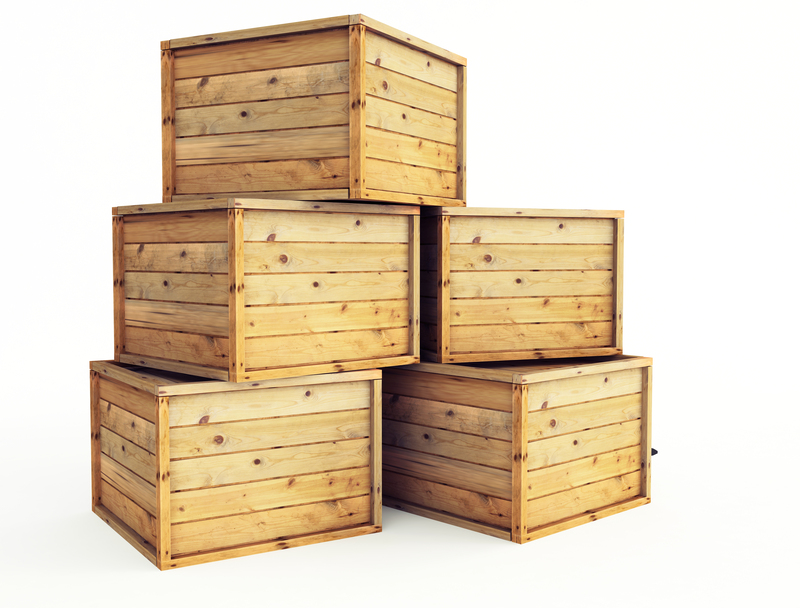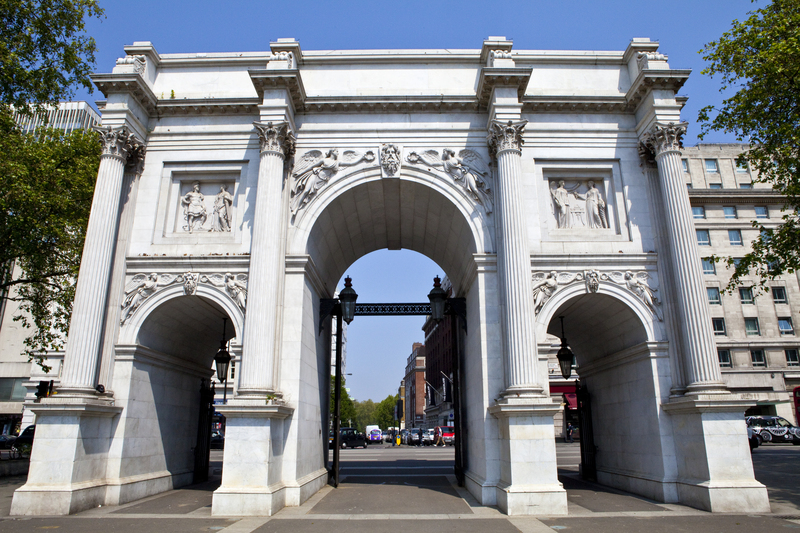Essential Decluttering Steps for a Smooth Move
Posted on 27/05/2025
Essential Decluttering Steps for a Smooth Move
Moving to a new home is both an exciting opportunity and a challenging process. Whether you're relocating across town or making a long-distance move, the first--and arguably most important--step is decluttering your home. By thoughtfully sorting through your belongings, you ensure your move is efficient, organized, and stress-free. In this comprehensive guide, you'll find step-by-step decluttering strategies and expert advice for making your move as smooth as possible.

Why Declutter Before a Move?
Moving presents the perfect chance to start fresh. Decluttering before a move not only saves you time and money, but it also helps you create a more inviting and comfortable environment in your new home. Here are a few key benefits:
- Lower Moving Costs: Fewer items mean fewer boxes, less packing material, and ultimately lower shipping or moving expenses.
- Less Stress: Uncluttered spaces are easier to keep organized, making both packing and unpacking far more manageable.
- New Beginnings: Leave behind unnecessary items and focus on what truly matters in your new space.
- Simplifies Packing: With less to pack, your moving process will be faster and more systematic.
Step 1: Set Goals and a Timeline
Before you begin decluttering for a move, establish your objectives. Ask yourself what you want your new space to feel like. Is it minimalist, cozy, or somewhere in-between? Set a timeline for each room, allocating extra days for more cluttered spaces such as the kitchen or garage. Breaking the task into smaller, manageable chunks prevents overwhelm and keeps you on track.
- Make a Decluttering Schedule: Assign specific dates and stick to them.
- Prioritize Problem Areas: Start with the rooms that tend to gather the most clutter.
- Enlist Help: Ask family members or friends for assistance if necessary.
Step 2: Gather Supplies for Sorting and Packing
Proper supplies simplify the decluttering and moving process. Prepare everything before you begin so you can stay focused. Here are essential items to have:
- Sturdy Boxes: Both for donations and packing for your move.
- Trash Bags: For broken, damaged, or unusable items.
- Labels and Markers: To clearly identify your categories (keep, donate, sell, recycle, trash).
- Cleaning Supplies: Keep each area neat as you go.
Step 3: Categorize Your Belongings
Sorting your possessions into clear categories is central to any successful decluttering plan. Use this popular method:
- Keep: Essential and meaningful items you'll use in your new home.
- Donate: Items in good condition that you no longer need but can benefit others.
- Sell: Valuables that may earn extra cash if you have the time and energy to sell them.
- Recycle: Items that can be responsibly recycled rather than thrown away.
- Trash: Unusable, worn-out, or broken belongings.
As you sort, be honest about what you truly need and use. If you haven't worn, used, or appreciated something in the past year, it's probably time to let it go.
Step 4: Declutter Room by Room
The easiest way to prevent decision fatigue and disorganization is to declutter each room separately. This systematic approach ensures nothing is overlooked. Here's a room-by-room guide to help streamline your pre-move decluttering process:
Living Room
- Remove old magazines, broken electronics, or decor you no longer enjoy.
- Donate or sell furniture that won't fit in your new space.
- Check shelves for books or DVDs you don't intend to keep.
Kitchen
- Dispose of expired food, unused spices, or broken appliances.
- Reduce duplicates such as extra spatulas, mugs, or containers.
- Gift or donate gadgets you barely use.
Bedrooms
- Purge clothes that don't fit or match your style.
- Pair down linens, blankets, and towels to only what you need.
- Sort through jewelry, shoes, and accessories--it's time to be ruthless!
Bathroom
- Toss expired medicine, beauty products, and toiletries.
- Minimize how many spare towels or bath mats you have.
Garage or Storage Spaces
- Old sports equipment, unnecessary tools, and forgotten holiday decor should be sold, donated, or disposed of responsibly.
- Safely discard hazardous materials, paint, or chemicals via city waste collection programs.
Step 5: Organize What You're Keeping
Once you've sorted, don't just toss your keeper items back in a box. Instead, organize your belongings by type and frequency of use. This will:
- Make Packing Simpler: Group like-items together to make labeling and unpacking a breeze.
- Maximize Space: Smart organization means fewer boxes and less clutter in your new home.
Label every box with its contents and intended room in your new place. Consider color-coding or numbering boxes for even more clarity during the move.
Step 6: Responsibly Donate, Sell, or Recycle Items
Lightening your load doesn't mean tossing everything in the trash. Consider your unwanted items' value or usefulness to others:
- Donate: Clothes, furniture, and household items in good condition can be sent to local charities, shelters, or thrift stores.
- Sell: Use online marketplaces, local consignment stores, or a moving sale for items of higher value.
- Recycle: Electronics, batteries, and some plastics can often be recycled at designated local centers. Consult your town's waste management resources.
Tip: Schedule donation pickups in advance for bulky items. This saves time and heavy lifting later on!
Step 7: Handle Sentimental Items with Care
One of the toughest parts of decluttering for a smooth move is dealing with sentimental belongings. These might be family heirlooms, children's artwork, or souvenirs. Here's how to approach it:
- Allow yourself time to process these decisions--don't rush.
- Take photos of items you can't bring but want to remember.
- Create a memory box for the most meaningful keepsakes, limiting yourself to one box per family member if possible.
Remember: Your memories aren't in the objects--they're in you and the stories you carry forward!
Step 8: Prepare for Packing Day
Your smooth move depends on a streamlined packing process. Once you've finished decluttering, you'll have a clear idea of what remains. Prepare for packing day by:
- Securing all packing materials--boxes, tape, bubble wrap, labels, markers, and scissors.
- Making a master inventory list of what's going into each box.
- Setting aside essentials in a "first night" box for each person--include toiletries, clothing, chargers, and any must-have items.
Bonus Tips for Stress-Free Decluttering and Moving
- Start early: Give yourself several weeks to declutter before the move date.
- Be ruthless: Ask yourself if each item adds value to your life or just takes up space.
- Stay focused: Avoid moving items from one room to another unless they truly belong there.
- Reward yourself: Celebrate each decluttered area and acknowledge your progress.
- Stay positive: Focus on the fresh start awaiting you in your new home!
Common Decluttering Mistakes to Avoid
Even with the best of intentions, some pitfalls can undermine your decluttering efforts. Avoid these traps:
- Procrastinating: Waiting too late makes the process rushed and more stressful.
- Getting sidetracked: Stay on task by working methodically through your list.
- Keeping "just in case" items: Be honest--will you really use it at your new home?
- Failing to dispose of unwanted items promptly: Schedule pickups or drop-offs as soon as possible.

Frequently Asked Questions About Decluttering for a Move
How far in advance should I start decluttering before a move?
Ideally, begin at least two months in advance--especially if you have a large home or need to coordinate donation pickups and sales. Starting early also keeps the stress at bay.
What should I absolutely not bring when moving?
Avoid moving broken appliances, mismatched or unused furniture, expired cosmetics, outgrown clothing, useless paperwork, and overly bulky items you rarely use. These only add to your moving costs and clutter your new space.
How do I stay motivated during the decluttering process?
Set small goals and celebrate achievements. Turn on your favorite playlist, reward yourself with breaks, and remind yourself of the light feeling you'll have after a successful declutter.
Conclusion: Enjoy Your Smooth, Clutter-Free Move!
By following these essential decluttering steps for a smooth move, you're setting the stage for a happier, simpler transition to your new home. A thoughtful decluttering process can transform a normally chaotic move into a liberating, organized experience.
Remember: The less you bring, the lighter your journey--both physically and emotionally. Happy moving!



